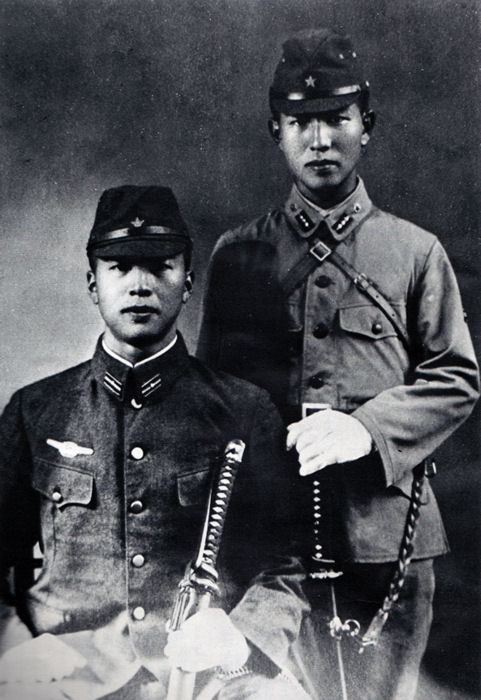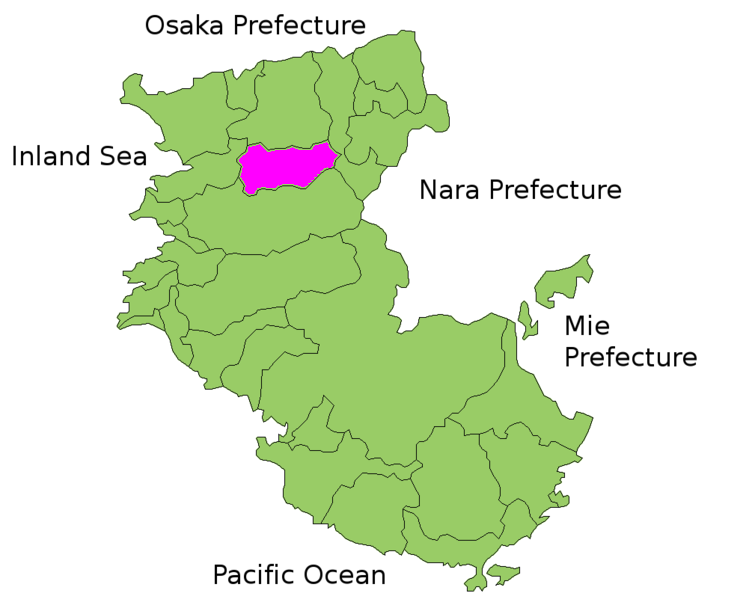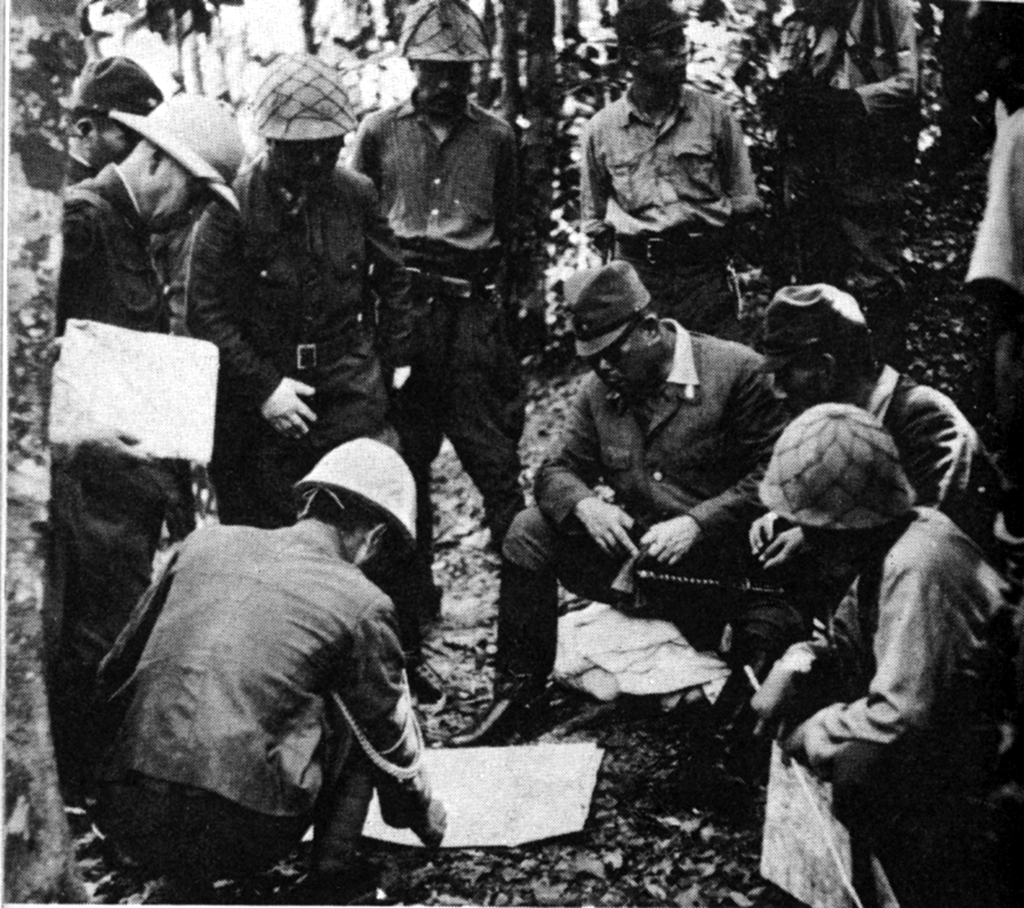|
Hirō Onoda
was an Imperial Japanese Army intelligence officer who fought in World War II and was a Japanese holdout who did not surrender at the war's end in August 1945. After the war ended, Onoda spent 29 years hiding in the Philippines until his former commander travelled from Japan to formally relieve him from duty by order of Emperor Shōwa in 1974.Willacy, M. (2010)Japanese holdouts fought for decades after WWII''ABC Lateline'' (12 November 2010). Retrieved on 16 September 2011.Powers, D. (2011)Japan: No Surrender in World War Two''BBC History'' (17 February 2011). Retrieved on 16 September 2011. He held the rank of second lieutenant in the Imperial Japanese Army. One of the last remaining and most famous Japanese holdouts, Onoda was the second to last Japanese soldier to surrender, with Teruo Nakamura surrendering later in 1974. Early life Onoda was born on 19 March 1922, in Kamekawa Village, Kaisō District, Wakayama Prefecture, Japan. When he was 17 years old, he went to work ... [...More Info...] [...Related Items...] OR: [Wikipedia] [Google] [Baidu] |
Kainan, Wakayama
270px, Street in Konoe neighborhood of Kainan is a city located in Wakayama Prefecture, Japan. , the city had an estimated population of 48,811 in 22129 households and a population density of 110 persons per km². The total area of the city is Geography Kainan is located in northern Wakayama prefecture and facing the Kii Channel. The northern half of the city is hilly and relatively gentle, but the southern half is covered with mountains. The highest peak is Kagamiishiyama, with an elevation of 558 meters. The main rivers are the Kishi River, which runs through the eastern portion of the city and the Kameno River, which runs through the northern and central portion. Neighboring municipalities Wakayama Prefecture *Wakayama * Arida * Kinokawa * Kimino * Aridagawa Climate Kainan has a Humid subtropical climate (Köppen ''Cfa'') characterized by warm summers and cool winters with light to no snowfall. The average annual temperature in Kainan is 15.6 °C. The average annual ... [...More Info...] [...Related Items...] OR: [Wikipedia] [Google] [Baidu] |
Kaisō District, Wakayama
is a district located in Wakayama Prefecture, Japan Japan ( ja, 日本, or , and formally , ''Nihonkoku'') is an island country in East Asia. It is situated in the northwest Pacific Ocean, and is bordered on the west by the Sea of Japan, while extending from the Sea of Okhotsk in the north .... As of September 1, 2008, the district has an estimated population of 10,988 and a density of . The total area is . Towns and villages * Kimino Mergers * On April 1, 2005 the town of Shimotsu merged into the city of Kainan. * On January 1, 2006 the towns of Misato and Nokami merged to form the new town of Kimino. Districts in Wakayama Prefecture {{Wakayama-geo-stub ... [...More Info...] [...Related Items...] OR: [Wikipedia] [Google] [Baidu] |
Tomoyuki Yamashita
was a Japanese officer and convicted war criminal, who was a general in the Imperial Japanese Army during World War II. Yamashita led Japanese forces during the invasion of Malaya and Battle of Singapore, with his accomplishment of conquering Malaya and Singapore in 70 days earning him the sobriquet "The Tiger of Malaya" and led to the British Prime Minister Winston Churchill calling the ignominious fall of Singapore to Japan the "worst disaster" and "largest capitulation" in British military history. Yamashita was assigned to defend the Philippines from the advancing Allied forces later in the war, and while unable to prevent the Allied advance, he was able to hold on to part of Luzon until after the formal Surrender of Japan in August 1945. After the war, Yamashita was tried for war crimes committed by troops under his command during the Japanese defense of the occupied Philippines in 1944. Yamashita denied ordering those war crimes and denied having knowledge that they ev ... [...More Info...] [...Related Items...] OR: [Wikipedia] [Google] [Baidu] |
Surrender Of Japan
The surrender of the Empire of Japan in World War II was announced by Emperor Hirohito on 15 August and formally signed on 2 September 1945, bringing the war's hostilities to a close. By the end of July 1945, the Imperial Japanese Navy (IJN) had become incapable of conducting major operations and an Allied invasion of Japan was imminent. Together with the United Kingdom and China, the United States called for the unconditional surrender of the Japanese armed forces in the Potsdam Declaration on 26 July 1945—the alternative being "prompt and utter destruction". While publicly stating their intent to fight on to the bitter end, Japan's leaders (the Supreme Council for the Direction of the War, also known as the "Big Six") were privately making entreaties to the publicly neutral Soviet Union to mediate peace on terms more favorable to the Japanese. While maintaining a sufficient level of diplomatic engagement with the Japanese to give them the impression they might be wi ... [...More Info...] [...Related Items...] OR: [Wikipedia] [Google] [Baidu] |
Flyer (pamphlet)
A flyer (or flier) is a form of paper Paper is a thin sheet material produced by mechanically or chemically processing cellulose fibres derived from wood, rags, grasses or other vegetable sources in water, draining the water through fine mesh leaving the fibre evenly distributed ... advertisement intended for wide distribution and typically posted or distributed in a public place, handed out to individuals or sent through the mail. In the 2010s, flyers range from inexpensively photocopier, photocopied leaflets to expensive, glossy, full-color circulars. There are also digital flyers, similar to the printed ones, but can be shared on the internet. Terminology A flyer is also called a "circular", "handbill", "pamphlet", "poster", "lit'" (literature), "weekly ad", "catalogue" or "leaflet". Usage Flyers may be used by individuals, businesses, not-for-profit organizations or governments to: * Advertise an event such as a music concert, nightclub appearance, festival, or poli ... [...More Info...] [...Related Items...] OR: [Wikipedia] [Google] [Baidu] |
Private First Class
Private first class (french: Soldat de 1 classe; es, Soldado de primera) is a military rank held by junior enlisted personnel in a number of armed forces. French speaking countries In France and other French speaking countries, the rank (; ) is used. Poland In Poland, the rank is called (). Singapore Introduced in 1983, the honorific rank is awarded to hardworking conscript citizen-soldiers who performed well in their National Service term. Private First Class (PFC) wear a rank insignia of a single chevron pointing down. The Private First Class (PFC) rank is rarely awarded nowadays by the Singapore Armed Forces. All private enlistees can be promoted directly to Lance Corporal (LCP) should they meet the minimum qualifying requirements, conduct appraisal and work performance. United States United States Army In the United States Army, recruits usually enter service as a private in pay grade E-1. Private (E-2), designated by a single chevron, is typically an automatic ... [...More Info...] [...Related Items...] OR: [Wikipedia] [Google] [Baidu] |
Corporal
Corporal is a military rank in use in some form by many militaries and by some police forces or other uniformed organizations. The word is derived from the medieval Italian phrase ("head of a body"). The rank is usually the lowest ranking non-commissioned officer. In some militaries, the rank of corporal nominally corresponds to commanding a section or squad of soldiers. By country Argentina NCOs in the Argentine Armed Forces are divided into junior and senior NCOs, with three and four ranks, respectively. The three junior ranks are called "corporal" (cabo) in both the Navy and the Air Force, while in the Army the third rank is called "sergeant" (sargento). National Gendarmerie and Coast Guard junior NCOs ranks are similar to those in the Army and Navy, respectively. Australia Corporal is the second lowest of the non-commissioned officer ranks in the Australian Army, falling between lance-corporal and sergeant. A corporal is usually appointed as a section comman ... [...More Info...] [...Related Items...] OR: [Wikipedia] [Google] [Baidu] |
Private (rank)
A private is a soldier, usually with the lowest rank in many armies. Soldiers with the rank of Private may be conscripts or they may be professional (career) soldiers. The term derives from the medieval term "private soldiers" (a term still used in the British Army), contrasting mercenary soldiers and denoting individuals who were either exclusively hired, conscripted, or mustered into service by a feudal nobleman commanding a battle group of an army. Asia Indonesia In Indonesia, this rank is referred to as '' Tamtama'' (specifically ''Prajurit'' which means soldier), which is the lowest rank in the Indonesian National Armed Forces and special Police Force. In the Indonesian Army, Indonesian Marine Corps, and Indonesian Air Force, "Private" has three levels, which are: Private (''Prajurit Dua''), Private First Class (''Prajurit Satu''), and Master Private (''Prajurit Kepala''). After this rank, the next promotion is to Corporal. File:prada pdh ad.png, Private (''Prajurit ... [...More Info...] [...Related Items...] OR: [Wikipedia] [Google] [Baidu] |
President Marcos And Hiroo Onoda
President most commonly refers to: *President (corporate title) *President (education), a leader of a college or university *President (government title) President may also refer to: Automobiles * Nissan President, a 1966–2010 Japanese full-size sedan * Studebaker President, a 1926–1942 American full-size sedan * VinFast President, a 2020–present Vietnamese mid-size SUV Film and television *'' Præsidenten'', a 1919 Danish silent film directed by Carl Theodor Dreyer * ''The President'' (1928 film), a German silent drama * ''President'' (1937 film), an Indian film * ''The President'' (1961 film) * ''The Presidents'' (film), a 2005 documentary * ''The President'' (2014 film) * ''The President'' (South Korean TV series), a 2010 South Korean television series * ''The President'' (Palestinian TV series), a 2013 Palestinian reality television show *''The President Show'', a 2017 Comedy Central political satirical parody sitcom Music *The Presidents (American soul band) *The ... [...More Info...] [...Related Items...] OR: [Wikipedia] [Google] [Baidu] |
Lubang Island
Lubang Island is the largest island in the Lubang Group of Islands, an archipelago which lies to the northwest of the northern end of Mindoro in the Philippines. The Lubang Islands are about southwest of Manila. There are seven islands in the group.Landor, Arnold Henry Savage (1904)''The Gems of the East: Sixteen Thousand Miles of Research Travel Among Wild and Tame Tribes of Enchanting Islands'' p. 10. Harper & Bros., New York. The island is divided into two municipalities. The largest settlement is the town of Lubang, the northwest end of the island. Its town center is about northwest of Tilik Port. The southeastern half of the island is covered by the Municipality of Looc, which also has its port located in Barangay Agkawayan. The Lubang island group, which constitutes all the seven islands, are geographically distinct from any landmass, making it biologically unique - and endangered at the same time. The islands are under consideration to be set aside as a UNESCO tentative ... [...More Info...] [...Related Items...] OR: [Wikipedia] [Google] [Baidu] |
Nakano School
The was the primary training center for military intelligence operations by the Imperial Japanese Army during World War II. History The Imperial Japanese Army had always placed a high priority on the use of unconventional military tactics. From before the time of the First Sino-Japanese War, Japanese operatives, posing as businessmen, Buddhist missionaries in China, Manchuria and Russia established detailed intelligence networks for production of maps, recruiting local support, and gathering information on opposing forces. Japanese spies would often seek to be recruited as personal servants to foreign officers or as ordinary laborers for construction projects on foreign military works. Such activities fell under the oversight of the 2nd Section of the Imperial Japanese Army General Staff Office. In July 1938, after a number of attempts to penetrate the military of the Soviet Union had failed, and efforts to recruit White Russian had failed, Army leadership felt that a more "system ... [...More Info...] [...Related Items...] OR: [Wikipedia] [Google] [Baidu] |
Commando
Royal Marines from 40 Commando on patrol in the Sangin">40_Commando.html" ;"title="Royal Marines from 40 Commando">Royal Marines from 40 Commando on patrol in the Sangin area of Afghanistan are pictured A commando is a combatant, or operative of an elite light infantry or special operations force, specially trained for carrying out raids and operating in small teams behind enemy lines. Originally "a commando" was a type of combat unit, as opposed to an individual in that unit. In other languages, ''commando'' and ''kommando'' denote a "command", including the sense of a military or an elite special operations unit. In the militaries and governments of most countries, commandos are distinctive in that they specialize in unconventional assault on high-value targets. In English, to distinguish between an individual commando and a commando unit, the unit is occasionally capitalized. Etymology From an ancient lingual perspective the term commando derives from Latin ''commen ... [...More Info...] [...Related Items...] OR: [Wikipedia] [Google] [Baidu] |






